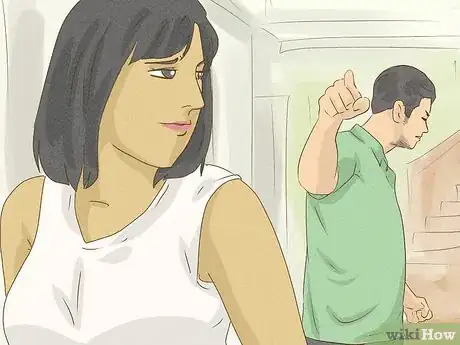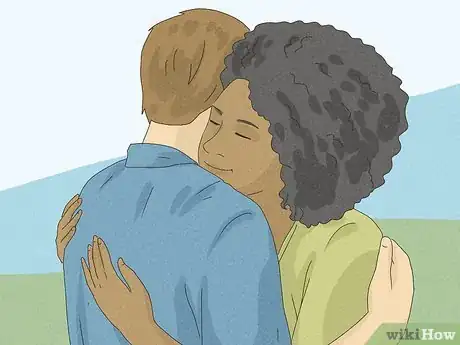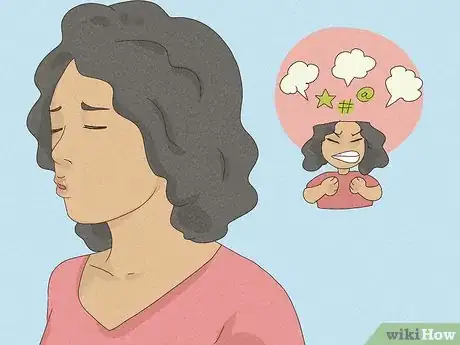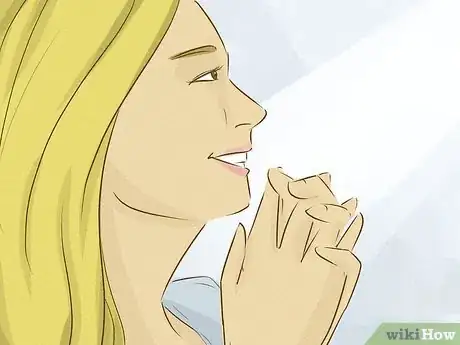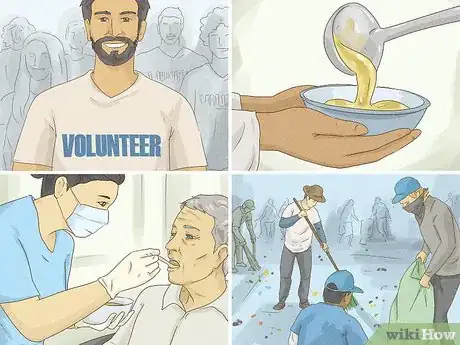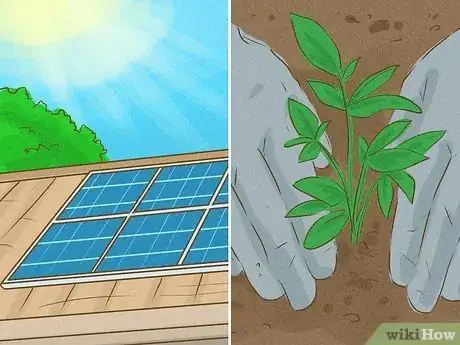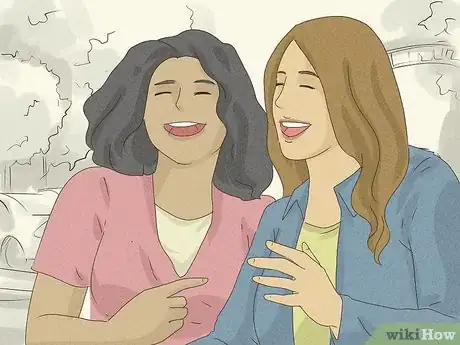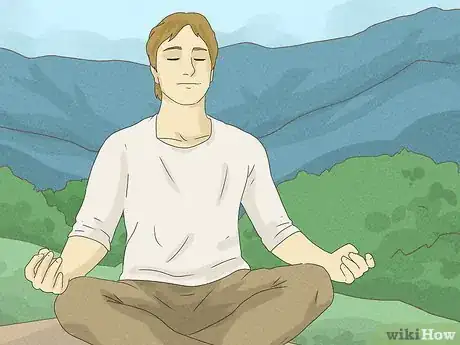This article was co-authored by Ira Israel and by wikiHow staff writer, Hannah Madden. Ira Israel is a Licensed Counselor and Psychotherapist who has been in private practice for over 14 years. He specializes in teaching others about happiness and authenticity. Ira teaches sold-out Happiness and Authenticity workshops at Esalen Institute and Kripalu Center and has written over 400 articles on psychology, philosophy, Buddhism, yoga, film, art, music & literature for The Huffington Post, Good Men Project, Mind Body Green, Thrive Global, and Medium. Ira is also the author of How to Survive Your Childhood Now That You’re an Adult: A Path to Authenticity and Awakening. He attended The University of Pennsylvania and has graduate degrees in Psychology, Philosophy, and Religious Studies.
There are 7 references cited in this article, which can be found at the bottom of the page.
This article has been viewed 11,823 times.
Ahimsa, also spelled Ahinsa, is the practice of non-violence and compassion toward every living thing in your daily life.[1] Not only is it passive non-violence, it’s active compassion and positivity. While this term is often used by yoga enthusiasts, you can practice it both on and off the mat at any time. Practicing Ahimsa is a personal journey that you can tailor to your own specific needs, wants, and values. You can get started right away to better yourself and the effect you have on others today.
Steps
Emotional Health
-
1Be kind to yourself when you make mistakes. Everyone makes mistakes, and you’re no different. Instead of talking down to yourself, remind yourself of all your strengths and the positive aspects of your personality. Just because you made one mistake doesn’t mean you’re a bad person, just like it wouldn’t make a friend or a family member a bad person, either.[2]
- Try saying something like, “I made a mistake, but I’m only human. I’d forgive someone else for making this mistake, so I should forgive myself, too.”
-
2Practice forgiving others. It can be easy to get passive aggressive or annoyed when someone does something wrong, but practicing Ahimsa is all about compassion and peace. Try to forgive your loved ones when they make mistakes by thinking about how you’d like to be forgiven, too.[3]
- If you feel yourself getting angry, take a few deep breaths and walk away until you can think clearly again. This can take some practice, so give yourself a break!
Advertisement -
3Keep a level head, even when you get angry. If you’re the type of person who gets mad easily, try to take a few deep breaths and remain calm. You can cause harm to someone with your anger, so if you need to step away for a few minutes to collect yourself, you should. Practicing Ahimsa is a learning curve, so don’t beat yourself up if you mess up once or twice.[4]
- Practicing meditation, counting to 10, drinking a cold glass of water, or taking a walk can all help you calm down when you’re feeling mad.
-
4Give people the benefit of the doubt. When someone wrongs you or makes a mistake, it can be easy to blame them or say they did it on purpose. As you practice Ahimsa, try to be compassionate when you react to others and remember that everyone is dealing with their own struggles. Remind yourself that everyone is human and they could be having a tough day, year, or even life.[5]
- If someone snapped at you at the grocery store, it might be because they didn’t get much sleep last night. If your friend was short with you on the phone, it’s probably because they’re having a bad day. Things like that usually aren’t personal, even if it seems like it at the time.
-
5Let things go. Holding a grudge can be really stressful, especially if you’re still angry about it. If you’re still thinking about something or someone who wronged you, try to forgive them in your mind so you can not think about it anymore (chances are, you’ll feel better, too).[6]
- You don’t have to go up to someone and say “I forgive you.” Forgiveness is personal, and you can do it on your own time whenever you're ready.
In the Community
-
1Volunteer to give back to your community. Rather than just doing no harm, you can actively bring good back into your community by volunteering your time. Help out at a local shelter, do a neighborhood cleanup, or pick up trash along the side of the road. Whatever you do, you’ll be actively helping your environment, and you might meet some cool people along the way![7]
- You can do any type of volunteering that you feel up to, as long as it benefits your community.
-
2Eat ethical, local food. Although most people who practice Ahimsa are vegetarian, you don’t have to cut meat entirely out of your diet. Instead, you should find food within your community that’s local, produced ethically, and good for your body. That way, you can cause the least amount of harm to those around you with your eating practices.[8]
- If there’s a farmer’s market near you, that’s a great place to start looking for local food that’s in season.
- Eating locally also helps the environment since you’re cutting back on your carbon footprint.
-
3Be eco-conscious to care for the earth. Doing no harm also means caring for the place that you live. Try to reduce the amount of plastic you use, take public transportation if you can, or plant a pollinator garden in your backyard. There are tons of ways you can look out for mother earth, and it will probably make you feel more connected to our planet, too.[9]
- You can also start a compost pile, buy from ethical clothing companies, try going vegan for a few days out of the week, or reduce your travel by airplane. Every little bit counts.
-
4Give your money to a charity. Find a charity that does something you support—cancer research, protecting animal rights, or cleaning up the environment. Try to give a little bit of your income to the charity as often as you can so you can spread peace with a broader range.[10]
- There may also be local charities that you can find in your own community.
-
5Surround yourself with others who are also non-violent. You don’t have to seek out other people practicing Ahimsa, but you can find friends whose values line up with yours. If they also resolve conflicts quickly without drama, don’t like to gossip, and work toward bettering themselves daily, they’re probably good people to learn from. You might even know some people like that already![11]
- Your friends can influence your actions greatly. If you hang out with people who are angry and violent, chances are, you’ll lean that way too.
Self-Care
-
1Relax and unwind. When you feel stressed, you probably aren’t focusing on spreading peace. Take a few moments out of the day to do something relaxing, like reading a book, doing a puzzle, or taking a bath. The more grounded and relaxed that you feel, the better you’ll be able to practice non-violence.[12]
- Remember, doing no harm to anyone includes yourself, too.
-
2Do yoga with mindful intention. As you do your yoga poses, whatever they may be, think about drawing strength and resolution from each pose. Your aim is to live your life without fear or conflict, and you can start by thinking about that on the yoga mat.[13]
- Poses like the Lotus Pose and Warrior I are great for setting intentions and drawing strength and serenity.
-
3Practice meditation as often as you can. There are many different ways that you can practice mediation in your daily life. A simple and easy way to do so is to take 5 minutes out of every day to just sit and breathe. Pay attention to your thoughts and bring yourself back into your own body. Really focus on what you’re thinking about and any negative thoughts you might have.[14]
- Doing no harm also means being kind to yourself. If you’re thinking negative thoughts, you may need to replace them with positive ones.
- It may be helpful to repeat a mantra as you meditate. Something like, “Spreading love, spreading peace” can bring you back into the mindset of non-violence.
References
- ↑ https://www.britannica.com/topic/ahimsa
- ↑ https://www.gaia.com/article/practice-ahimsa-everyday-life
- ↑ https://www.bbc.co.uk/religion/religions/jainism/living/ahimsa_1.shtml
- ↑ https://yogainternational.com/article/view/do-no-harm-the-art-of-ahimsa
- ↑ https://www.cpp.edu/~ahimsacenter/k12/documents/Sill%20Lesson%202.pdf
- ↑ https://www.cpp.edu/~ahimsacenter/k12/documents/Sill%20Lesson%202.pdf
- ↑ http://www.jogado.com/ahimsa-on-and-off-the-mat/
- ↑ https://mahb.stanford.edu/blog/ahimsa/
- ↑ https://www.bbc.co.uk/religion/religions/jainism/living/ahimsa_1.shtml
